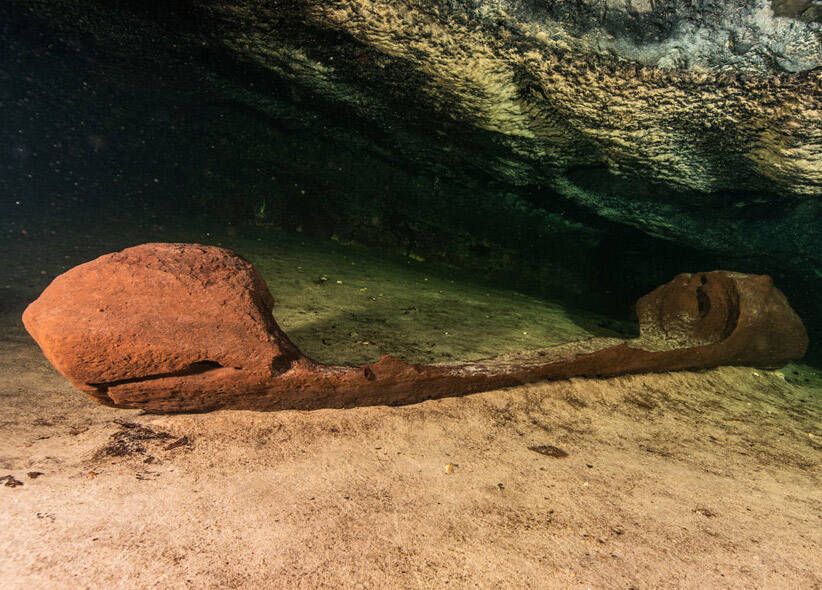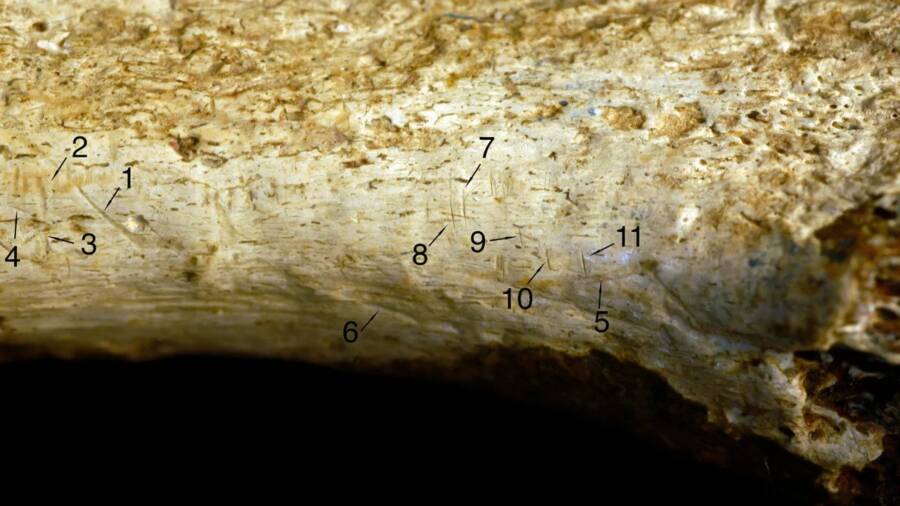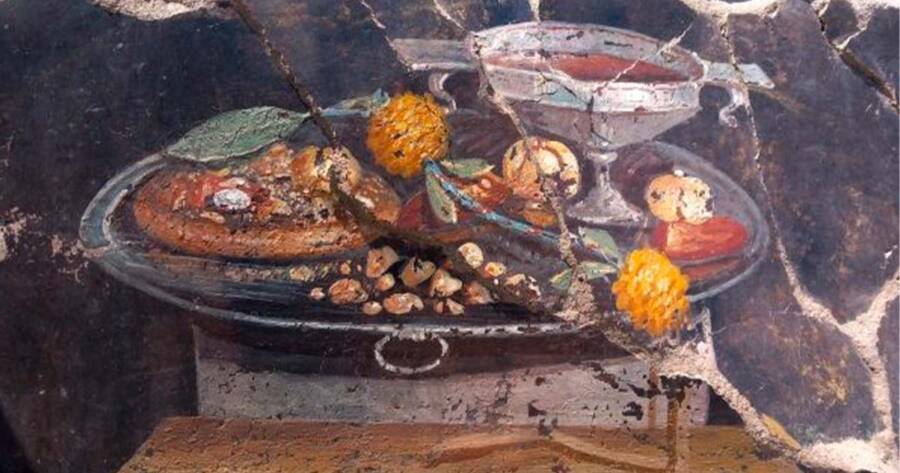Maya "portal to the underworld" found in Mexico, earliest evidence of human cannibalism discovered in Kenya, ancient pizza fresco unearthed in Pompeii.
Archaeologists In Mexico Uncovered A 500-Year-Old Maya Canoe That Marked An Entrance To The Underworld

INAHThis canoe was found at the bottom of a sinkhole filled with fresh water known as a cenote, which held great spiritual significance for the Maya as their sole source of drinking water in the Yucatán.
Researchers diving in an underwater cave in Mexico discovered a Maya canoe surrounded by dozens of bones that likely marked a portal to the underworld. Measuring in at seven feet long and just 18 inches wide, this canoe is the first intact Maya vessel of its kind ever found in the region. The canoe was found alongside the bones of an armadillo, an animal that held religious significance for the Maya as the earthly avatar of God L, the ruler of the underworld.
Learn the full story behind this astonishing find here.
Scientists Say Cuts On Prehistoric Shinbone Could Be Earliest Evidence Of Human Cannibalism

Jennifer ClarkScientists believe that nine of the 11 marks were made by stone tools; the other two were made by a lion-like animal.
Fifty years after the shinbone of a distant human relative was discovered in Kenya, a paleoanthropologist noticed something unsettling about tiny grooves on the bone’s surface. Briana Pobiner was looking for tooth marks left by animals when she noticed straight lines left by a tool, which suggested something else had gotten to the bone — another human.
Indeed, the 1.45 million-year-old bone appeared to have been cut with stone tools, meaning that it could be the oldest evidence of human cannibalism ever found.
Dig deeper in this report.
Archaeologists In Pompeii Discover “Pizza” Fresco Among Ancient Ruins

Pompeii Archeological ParkThe fresco depicting an ancient Roman version of pizza and other delectables.
Archaeologists surveying the ruins of an ancient home in Pompeii may have stumbled across a fresco depicting an early Roman “pizza.”
On the right side of the fresco, fruit such as pomegranates and dates cover the platter. On the left, researchers noticed a piece of bread that looked suspiciously similar to today’s pizza.
Read on here.





